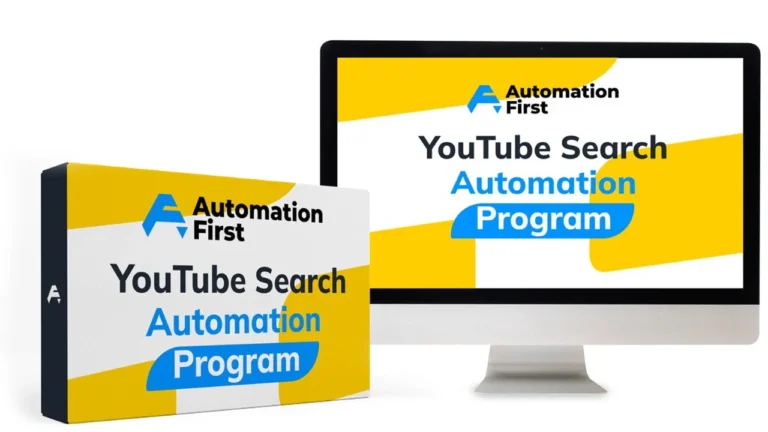Social Media Strategy for Nonprofits
A Social Media Strategy for Nonprofits is no longer optional—it’s essential. With billions of users active on platforms like Facebook, Instagram, Twitter, and LinkedIn, nonprofits have a unique opportunity to engage a global audience, amplify their mission, and drive impactful campaigns. However, without a well-defined strategy, even the most well-meaning efforts can get lost in the noise. This guide will help you craft a targeted social media strategy specifically designed for nonprofits to maximize outreach and impact.

Table of Contents
Understanding Your Audience
Before creating content, it’s crucial to understand who your nonprofit is trying to reach. Are you targeting potential donors, volunteers, or individuals who benefit from your services? Understanding your audience is the first step in building an effective Social Media Strategy for Nonprofits.
- Identifying Target Demographics: Knowing the age, location, interests, and online behavior of your audience helps tailor your content to engage them more effectively.
- Creating Personas: Define detailed personas representing different audience segments. This personalization makes it easier to create content that resonates with your followers.
Setting Clear Goals
Every part of your Social Media Strategy for Nonprofits should serve a clear purpose. Setting specific goals ensures that your social media efforts align with your nonprofit’s broader mission.
- Aligning Goals with Your Mission: Whether you’re focused on raising awareness, driving donations, or building a community, your social media goals should support your overall mission.
- SMART Goals: Use Specific, Measurable, Achievable, Relevant, and Time-bound goals. For instance, “increase monthly donor sign-ups by 15% over the next quarter” is a clear, actionable goal.
Choosing the Right Platforms
Not every platform will serve your nonprofit equally well. Choosing the right social media platforms is crucial in an effective Social Media Strategy for Nonprofits:
- Facebook: Ideal for engaging older audiences and promoting donation campaigns through features like Facebook Fundraisers.
- Instagram: Excellent for visual storytelling, using images and videos to create an emotional connection and drive action.
- Twitter: Perfect for real-time engagement, sharing quick updates, and live-tweeting events.
- LinkedIn: Best for nonprofits aiming to build corporate partnerships or engage with professionals.
- YouTube: Powerful for video storytelling—use it for testimonials, behind-the-scenes content, or educational videos.
- TikTok: If your nonprofit is targeting a younger audience, TikTok can be a great platform for bite-sized, engaging content.
Content Creation Strategy
Creating compelling content is the heart of your Social Media Strategy for Nonprofits. Your content should tell your nonprofit’s story, show its impact, and connect emotionally with your audience.
- Telling Your Story: Share stories that highlight the difference your nonprofit is making. Success stories, volunteer efforts, or beneficiary experiences can create powerful emotional connections.
- Visual Content: Posts with images or videos generally receive higher engagement. Use infographics, photos, and videos to capture your audience’s attention.
- User-Generated Content: Encourage your supporters to share their experiences with your nonprofit. This fosters a sense of community and helps promote your cause.
- Authenticity and Transparency: Be genuine in your communication. Transparency builds trust and credibility, which are essential for nonprofits.
Building a Content Calendar
A well-organized content calendar helps ensure consistency and allows you to plan your posts strategically.
- Tools for Scheduling: Use platforms like Buffer, Hootsuite, or Sprout Social to schedule content in advance.
- Planning Around Events: Incorporate important dates such as national holidays, awareness days, and your nonprofit’s fundraising events into your calendar.
Engaging with Your Audience
An essential aspect of a Social Media Strategy for Nonprofits is continuous engagement. Social media is a two-way conversation, and your followers expect interaction.
- Responding to Comments and Messages: Respond promptly to questions and comments to show your audience that you value their support.
- Creating Conversations: Use polls, questions, and interactive posts to foster dialogue and engage your followers.
- Encouraging Participation: Run contests, challenges, or create shareable content that allows your followers to participate in spreading your message.
Promoting Donations and Fundraising
Social media can significantly enhance your fundraising efforts. Incorporate donation promotion into your Social Media Strategy for Nonprofits.
- Add Donation Links: Ensure donation links are easy to find, including in your posts and social media bios.
- Best Practices for Fundraising: Share compelling stories, visuals, and calls to action that create urgency and inspire donations.
Leveraging Influencers and Ambassadors
Partnering with influencers or ambassadors can amplify your nonprofit’s message to new and larger audiences.
Paid Social Media Advertising
Even with a small budget, paid social media ads can expand your reach. Many platforms, like Facebook, offer discounted advertising options for nonprofits.
Tracking Performance and Metrics
Measuring your social media performance is crucial to refining your strategy. Tracking key metrics ensures you understand what’s working and where you can improve.
- Key Metrics to Track: Monitor likes, shares, comments, and, most importantly, conversions such as donations and volunteer sign-ups.
- Use Analytics Tools: Tools like Google Analytics and Facebook Insights can provide valuable data to inform your strategy.
Social Media Best Practices
Stay adaptable by updating your strategy according to algorithm changes, maintaining consistency in posting, and ensuring your tone fits your nonprofit’s brand.
Challenges for Nonprofits
Limited resources can make it challenging for nonprofits to maintain a robust social media presence. However, with a thoughtful and well-executed strategy, even small nonprofits can have a significant impact.
Conclusion
A well-structured Social Media Strategy for Nonprofits is essential to engage supporters, increase visibility, and drive positive change. By setting clear goals, choosing the right platforms, and focusing on meaningful engagement, your nonprofit can harness the power of social media to further its mission.
FAQs
- What is the best social media platform for nonprofits? Facebook is highly recommended due to its fundraising tools and large user base.
- How often should nonprofits post on social media? Aim for at least 3-5 posts per week to stay engaged without overwhelming your audience.
- Should nonprofits invest in social media ads? Yes, even a modest budget can significantly expand your reach, especially for fundraising.
- How do I measure social media success for my nonprofit? Track metrics like engagement (likes, comments, shares) and the number of donations or volunteer sign-ups driven by social media.
- Can nonprofits use influencers? Absolutely! Partnering with influencers can greatly amplify your nonprofit’s message.





